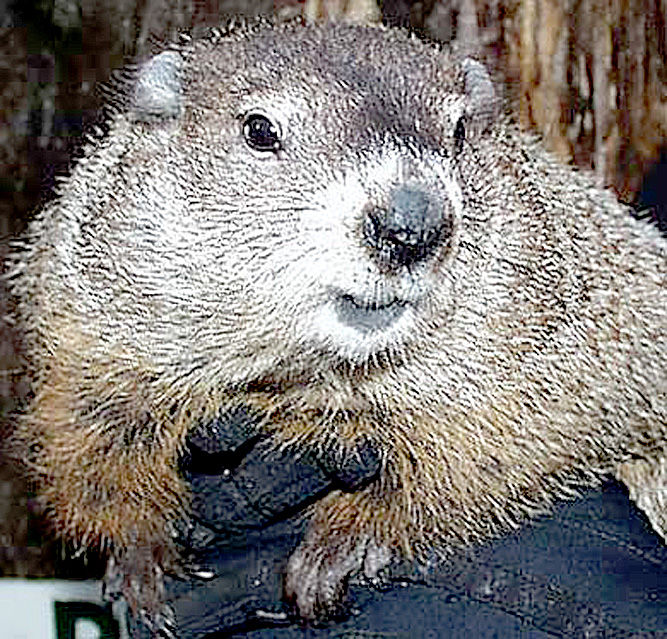It’s Groundhog Day again!
Published 11:00 am Saturday, February 2, 2013

- Punxsutawney Phil
This morning, people in towns across the United States rose early from their beds and stepped outside to see if a small, furry rodent-type animal has put an early end to winter’s chill or extended the cold weather for six more weeks.
This year, from the balmy South to the usually chilly North, it seems winter has never really arrived … until maybe the past few days and this weekend.
So, what will Groundhog Day tell us about what’s left of the winter season? We know today as portions of the country take a few amused moments to let a groundhog predict the weather for the next several weeks. If the groundhog saw its shadow this morning, the old legend claims, we will experience six more weeks of winter weather. If he didn’t see his shadow, then there should be an early spring.
There are numerous “official” groundhog prognosticators around the country, even one in North Georgia, but the most famous is Punxsutawney Phil, in the Pennsylvania town of the same name. Many folks who know their
groundhogs, and their Groundhog Days, claim this is where the tradition started nearly 300 years ago.
Looking further back, according to the Stormfax Weather Almanac, the Delaware tribe settled the Punxsutawney region between the Allegheny and Susquehanna rivers in Pennsylvania, and the Delaware “considered groundhogs honorable ancestors,” since the Indian tribe believed its forefathers were once animals within the earth and “emerged centuries later to hunt and live as men.” Groundhog, it must be noted, is really another name for woodchuck, which is reportedly a derivation of the name Wojak. Wojak the groundhog was considered by the Delaware to be their ancestral grandfather.
Wojak doesn’t answer the old question, “how much wood could a woodchuck chuck if a woodchuck could chuck wood,” but it does explain why a creature that doesn’t chuck wood is called a woodchuck.
By the 1700s, European settlers arrived in the Punxsutawney region. These pioneers began calling the woodchuck a groundhog. “American settlers named the marmot, or woodchuck (Arctomys monax), the groundhog, perhaps because this member of the squirrel family seems hoggish in the way he burrows through the ground,” according to Robert Hendrickson in his book, “Encyclopedia of Word and Phrase Origins.” “Or, possibly, groundhog is a translation of the Dutch aardvark made by Dutch settlers in America, even though the South American aardvark, or earth hog, is a larger burrowing animal than the groundhog.”
German settlers in the Punxsutawney region brought with them a holiday known as Candlemas Day, often on Feb. 2, which is the mid-point between the winter solstice and the spring equinox — or six weeks after winter begins and six weeks before spring starts. On this day, clergy distributed candles to light the dark of winter and to sustain faith that spring was drawing closer.
Concerning Candlemas Day, “superstition held that if the weather was fair, the second half of winter would be stormy and cold,” according to Stormfax.
At some point, during the settlement of the Punxsutawney region, the groundhog became associated with Candlemas Day, because the groundhog would surely see its shadow on a fair and bright day, meaning by Candlemas standards six more weeks of winter weather.
The earliest reference to Groundhog Day was written Feb. 4, 1841, according to Stormfax, when a Pennsylvania storekeeper recorded in his diary: “Last Tuesday, the 2nd, was Candlemas Day, the day on which, according to the Germans, the groundhog peeps out of his winter quarters and, if he sees his shadow, he pops back for another six weeks nap, but if the day be cloudy he remains out, as the weather is moderate.”
Still, why a groundhog? Apparently, in Germany, people watched for a badger to see if it cast a shadow on Candlemas Day. Finding no badgers in their new home, they replaced it with the groundhog.
On Feb. 2, 1886, Clymer Freas, newspaper editor of The Punxsutawney Spirit, proclaimed the first official Groundhog Day, writing, “Today is Groundhog Day and up to the time of going to press the beast has not seen its shadow.” The “beast” was soon given the more friendly moniker of Punxsutawney Phil, “Seer of Seers, Sage of Sages, Prognosticator of Prognosticators, and Weather Prophet Extraordinary.” And on his first debut performance, he saw no shadow.
Lovers of spring and followers of Groundhog Day can only hope Phil didn’t see his shadow this morning. Unless, you might like a little more winter to match this weekend.





